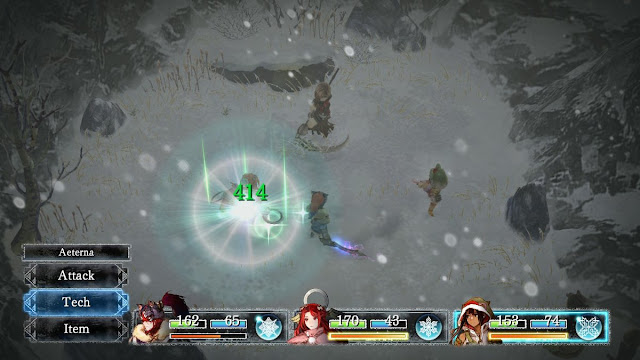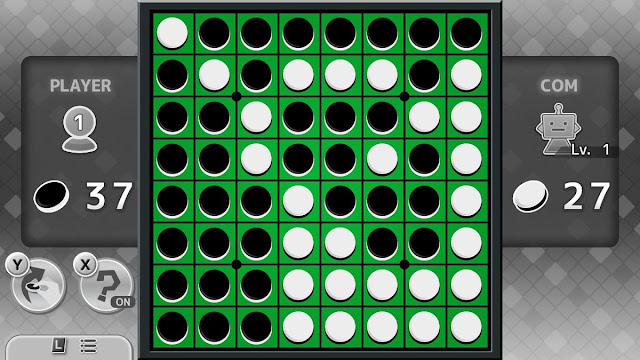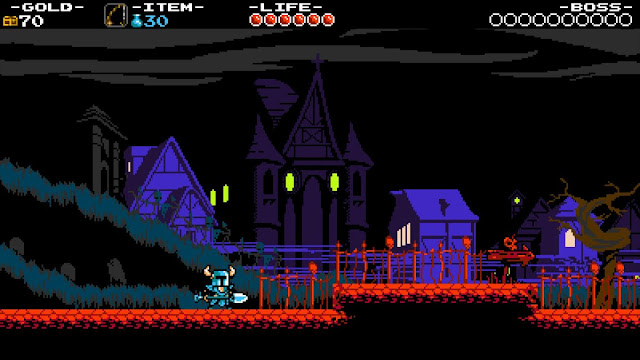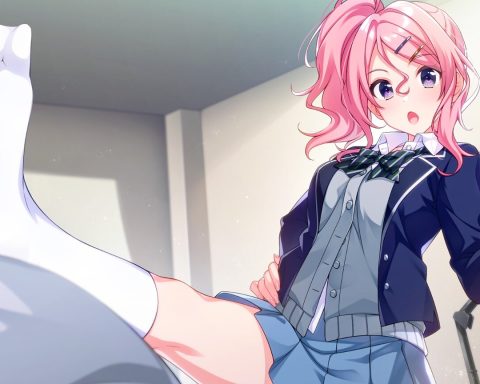Reviews by Matt S.
I know a lot of people seem to think that the only games available on the Nintendo Switch are The Legend of Zelda: Breath of the Wild, and Bomberman (mabye), but in actual fact the console released with quite a few games. In Europe and Australia, especially, the console launched with a whole lot of old-school Neo Geo games, and this helped really pad out what we had to play at launch.
We’ve got reviews of the major games coming through the week (you may have already seen our review of 1-2-Switch), and, of course, you’ll find our reviews of the big games, like Zelda, as full, separate reviews. This edition of Short ‘n Sweet is more designed to look at the smaller games released on the console, or the ports of existing games that you may or may not want to buy all over again.
Enjoy! And, of course, enjoy your shiny new console!
One of the real darlings of the JRPG scene last year was the wistfully melancholic and hauntingly beautiful I Am Setsuna. Too easily dismissed as being derivative to games like Chrono Trigger and Final Fantasy X, the game has an identity and charm all to itself, which is why it picked up no fewer than five awards in last year’s DDNet GOTY awards; it was either a finalist in, or won, Best Art, Best Narrative, Best New IP, PlayStation 4 GOTY, and Overall GOTY; more awards than any other game for the year.
Related reading: Matt’s original review of I Am Setsuna, on PlayStation 4.
In Japan, the game was a release both on PlayStation Vita and PlayStation 4. In the west, we only got the PlayStation 4 version, and that’s a bit of a pity, because the style and flow of the game fits far more naturally with portable platforms, where it’s easy to pick up and play for short bursts, and the minimalist, but beautiful, art style can wash over you without its technical limitations being evident, as they are on the big screen television.
Enter the Nintendo Switch edition of the game, and while it’s a straight port with no enhancements, it didn’t need to be enhanced in the first place. That gorgeous big screen makes for an incredible display of the game’s endless winter, and if you’re in the mood for the big television experience, you need only dock the console once you’re back at home. The added benefit is that the game doesn’t tax the Switch’s battery anywhere near as badly as games like Zelda does, and I’ve been able to use the game to make train trips absolutely bearable with a good pair of headphones, for both the trip and the return.
You should of course read my review of the game on PlayStation 4 to get a feel for why the game is so emotionally affecting and powerful. It’s the kind of game that will leave you feeling drained, but reflective and have a new appreciation for the effectiveness of the video gaming medium when it comes to telling stories. The Nintendo Switch may have launched with just one JRPG, but when it’s one of the finest, it’s a little difficult to complain about that.
Othello
Othello is one of those games that you buy on a new console simply to have content on the console. It’s so completely no-frills in how it goes about recreating the game that, six months down the track, no one’s going to even look at it twice, but for now, in between the other, more exciting multiplayer experiences, Othello is some nice filler content.
There’s no effort done into providing players with anything more than an AI for single player, or local multiplayer capabilities. There’s no online leaderboards or online play because that would require real development effort. Instead you get a simple, clean board with which to play the standard game of Othello over and over again.
For the single player game, there are 16 levels of AI difficulty. For anyone who thinks that that sounds like thin content, think again; I’m pretty good at board games (though I must admit that Othello isn’t my personal strength), and so far I’ve managed to beat the lowest two difficulty settings, after losing to both multiple times. I’ve played the third lowest AI a solid dozen times now, and no dice. Again, I’m good at board games. I was a competitive chess player. I’d suggest that the AI is almost too nasty for new players for the game to appeal to anyone who’s not a seasoned Othello fan. There’s no tutorial nor attempt to explain the strategy of Othello to new players, making it even less accessible.
The two player multiplayer allows each player to take one of the Joy-Cons (you only need a control stick and a single “select” button to play the game after all. The game works nicely on the Switch’s small screen, and I can indeed see my wife and I playing this a fair amount on our next flight to Japan, when we’re looking for something casual to relax with before nodding off for the night. But, yes, this really is as no-frills as games come, and is priced to match.
Shovel Knight: Treasure Trove
One of the things I love about a new console is that it encourages you to pick up and play games that you wouldn’t normally, simply because there isn’t so many examples of your favourite genres to choose between. Shovel Knight: Treasure Trove is one such game. I don’t usually play platformers, much less platformers inspired by old pixel games, but I figured I might as well give it a whirl on the Switch and see what all the fuss is about. I’m glad I did.
It’s the most gorgeous pixels-and-sprite based game this side of Shantae, for a start (nothing will ever beat sexy genies with purple hair, of course). Environments and characters pop with colours and detail that would be impossible on those older consoles, but help give this game such a distinct art style that, unlike many other retro-themed games, does more than just hide gameplay weaknesses under the excuse of ‘but it’s retro!’ Shovel Knight quite genuinely feels like it could not be done in any other way.
The game itself is tough, though not unreasonably so, with vivid bosses and level design that will challenge even the veterans. Players that “die” get taken back to some pretty generous checkpoints, but lose a portion of their accumulated wealth, and, Dark Souls-style, have to trek back to where they failed in order to regather their loot. It’s a clever way of giving players the freedom and encouragement to explore, while still offering some of that intimidation factor that old school players crave.
Sadly, I found later levels lost a lot of the game’s early steam, as too much of the old “pixel perfect” platforming starts to creep in. I never got along with Mega Man et al for that nonsense, when, difficult as they could be, the Mario Bros. games rarely required that level of precision. Shovel Knight is also, perhaps, a touch too long when the games it was inspired by were generally far, far more compact, and for good reason (it’s so they didn’t run out of ideas before the players ran out of enthusiasm). Those overindulgences are relatively minor issues in an otherwise excellent game, and really Shovel Knight is one of the finest examples of how to do retro without being a slave to it at the same time.
New Frontier Days – Founding Pioneers
All consoles should have simulation games on them. Be that city builders, tycoon games, or sports manager titles, there is an everlasting appeal in taking control of something and prudently managing it so that it can become something huge and lucrative. Thanks to mobile trends, however, too often this genre becomes too often an endless cycle of ‘click and wait’ – set a building down and wait for it to be built, at which point it will provide periodic resources which can be used to build more stuff. There’s no real lose state, just a rate of progression determined by how frequently you’re willing to pay the game and, often, how much you’re willing to pay to speed up progress. Blame Farmville for all of this.
New Frontier Days nominally has fail states and hasn’t got the microtransactions, but it’s so overtly inspired by the most casual of simulation games that my brother saw me playing it and instantly said “this is a port of a free-to-play mobile game, isn’t it?” It’s not, as far as I can tell, but that should tell you everything you need to know about the game, its aesthetics, and long term longevity.
You’re tasked with building up a small frontier town by building buildings, chopping down trees, hunting boar, fishing and shearing sheep, and then using those resources to make money and ‘promote’ your town to the next era, at which point you’ll do everything all over again, while having a greater range of buildings to construct. There are some threats; bears might attack your people, and every year you need to be able to afford a “festival” while feeding your people, lest you go bankrupt, but keeping in the black and keeping your people safe requires only the most light planning and strategy.
The generically pleasing, colourful aesthetics are charming in a fashion, though the endlessly looping music will remind you why you’d turn the sound off when games of its ilk, like Farmville, were big on Facebook. The gameplay loops that New Frontier Days offers are addictive and it’s easy to get dragged into watching the town build over a period of hours, but the $13 or so that the game asks upfront is about $11 more than I’ve ever been suckered into paying for one of these games when they’re free-to-play on mobile (I got a little too hooked and enthusiastic on Sim City BuildIt once, so sue me).
– Matt S.
Editor-in-Chief
Find me on Twitter: @digitallydownld














